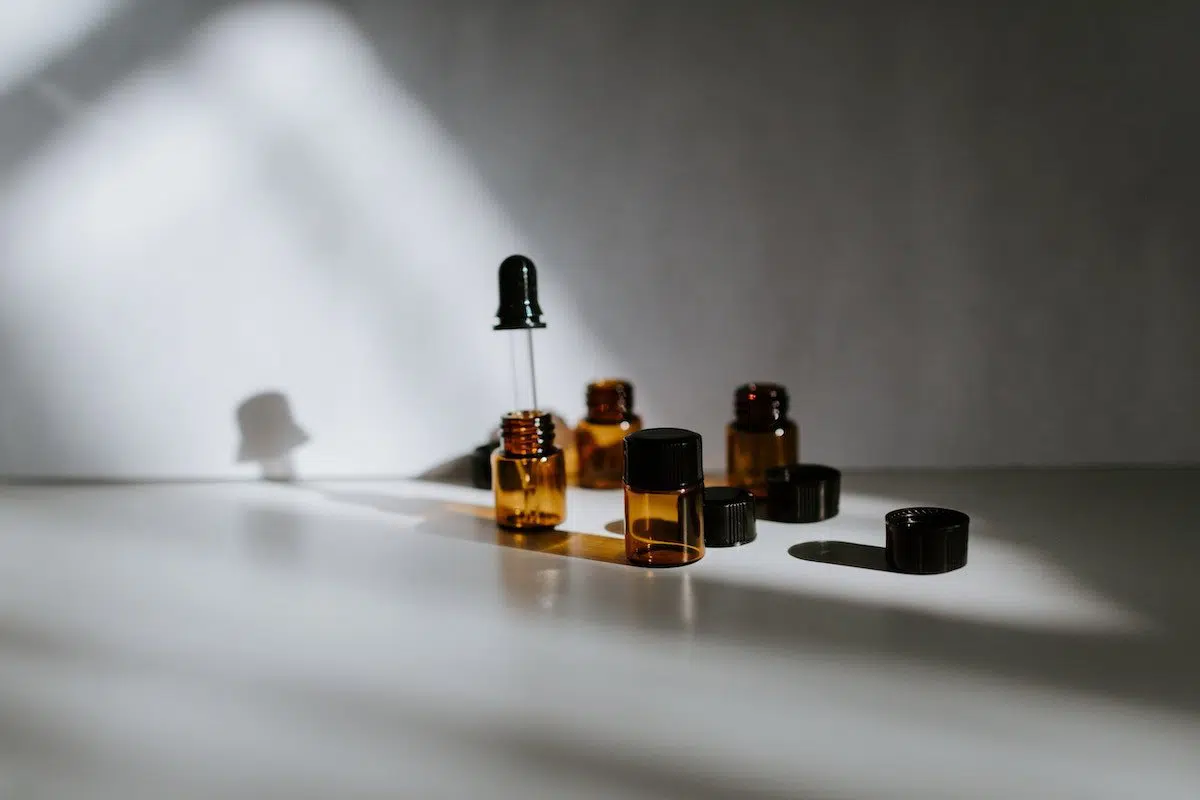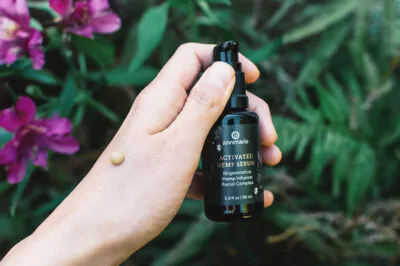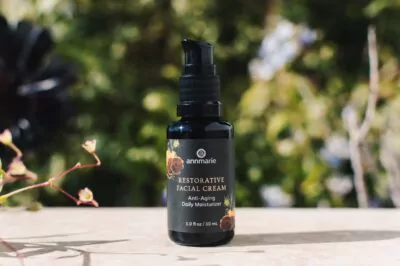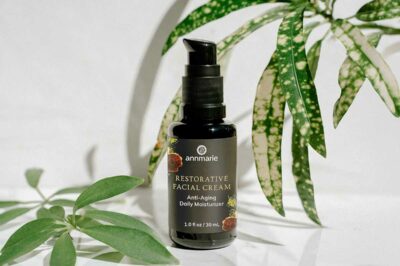Maybe you’ve been dealing with dry skin or dry sensitive skin for a while, or maybe it’s an emerging issue for you. As always, it’s best to start from the beginning—learn about why you’re experiencing dry skin so that you can choose the best moisturizer for your dry skin.
One of the things that sets us at Annmarie Skin Care apart from other skin care companies is our focus on continual training and renewing our knowledge. We don’t just spend our time creating and selling products—we also think it’s crucial to teach and share the latest in skin care science and education with you so that you know why we choose to make the products the way we do.
That way, when you start to recognize signs like dryness and dehydration, you know exactly what to do.
Dry Skin Origins
So where does dry skin come from? Lets start with a deep dive into sebum.
Simply put, sebum is the natural moisturizer that our bodies create to protect the skin and hair from external pathogens and water loss.
What is sebum?
Sebum is produced in the sebaceous glands, which are found everywhere on the human body except the palms of our hands and the soles of our feet, and is excreted to the surface of the skin to help create the barrier and keep our skin nice and smooth.
For the most part, sebum is made of fatty acids, wax esters, and cholesterols but just like how everyone’s skin is unique, the chemical makeup of everyone’s sebum is different and that means the oily-dry balance is different for everyone too.
If you’ve ever had oily skin, or you know people that seem to have a constant shine on their forehead, your skin may have been overproducing sebum. If you have dry, flaky skin, you may not be producing enough.

Sebum Over a Lifetime
Sebum levels within our bodies are largely affected by hormone levels. That’s why teens, with their big hormone changes and surges, tend towards oily skin and clogged pores. It’s also why people under constant stress tend to have more breakouts and why women can have different skin issues throughout the month.
As we age, and this is especially true for women, our bodies move towards less natural hormone production. With fewer hormones in our bodies, it’s common for our sebaceous glands to be less active and we produce less sebum. This leaves our skin unprotected from environmental damage, water loss, and it can exacerbate the signs of aging.
Dry vs. Dehydrated Skin: What’s the Difference (And How to Fix Yours)
Why Moisturize?
The ultimate point of a moisturizer is to mimic balanced sebum production to keep the skin protected, moisturized, and hydrated—of course, the beauty that comes with dewy, fresh skin is also wonderful. Maximize these effects by avoiding these common moisturizing mistakes to prevent quickly aging skin.
Since an important function of sebum (as well as hyaluronic acid) is to hold water in the skin, if you’re experiencing dry skin there’s also a pretty good chance that you’re experiencing dehydrated skin.
dehydration vs. dryness
The difference between dehydration and dryness is subtle, but impactful, because if you’re suffering from dehydration, it means that there isn’t enough water to plump up your skin cells so that they can absorb the oil that you’re applying. You want to hydrate and then add your moisturizer to make sure that you’re giving your skin what it needs, keep it supple and in healthy condition.
That beautiful skin you’re after is actually an evolutionary sign of good health and genes (most vanity is) and since choosing the right face moisturizer increases the health of your skin, reduces the signs of aging, and helps you feel beautiful, it’s really important that you don’t skip moisturizing if you have dry skin.
Choosing Between Oil and Cream/Lotion
We wanted to include a little bit about the difference between an oil and a moisturizing face cream because we get this question all of the time. Yes, they are both moisturizers but we elect to work with carrier oils rather than cream products because a cream is typically made with an emulsification of oil and water.
You’re probably thinking, “but oil and water don’t mix,” and that’s precisely right. In order to create a lotion, there has to be an additional ingredient, like a wax, mixed in. Since the wax has to be melted to mix well, lotions are often made at very high temperatures, the kind of temperature that can kill the antioxidant activity and leave it less effective overall.
water in skin care
Additionally, water is life. There’s just no better way to say it. So when water comes into contact with the fats and acids in oils, they can grow mold and go rancid pretty quickly. Most companies add preservatives to their cream products to kill off those molds and enhance their shelf life and since there is very little regulation in the cosmetic industry, these preservatives go largely untested for quality and safety of use overtime.
That being said, there are great companies out there using organic ingredients and keeping their products clean that make lotions (like our Radiant Skin Silk) and this essentially boils down to texture preference and what your skin likes. If you love the feeling of a cream over and oil for your moisturizer, go for it! Just be sure to check in with the companies that you work with for some clarity around how they make their products and what the ingredients are in your favorite products.

The Right Carrier Oil for Dry Skin
There are a lot of options for the carrier oils that you use as a moisturizer—I bet if you walk into your kitchen right now you could probably find at least two or three—but you want to choose the right one, or maybe even the right blend. I
t’s important to know what your skin is needing and since everyone’s sebum has a different chemical makeup, it may take a bit of trial and error. Here are three tried and true carrier oils that are great for dry skin.
Jojoba Oil
Jojoba oil is actually made up of fats and wax esters so it is texturally similar to our skin’s natural oil. This type of oil is great for dry, flaky skin because the rich texture of the oil doesn’t immediately soak in so it’s really soothing to the top layers of the skin and it’s high in antioxidants so when it does soak in, it’s helpful in combatting environmental stressors.
We use it as a base in the Anti-Aging Facial Oil to add a bit of extra protection and rejuvenation to the facial oil.
Avocado Oil
This isn’t as thick as the jojoba so it’s less likely to sit on top of the skin. Because it penetrates so nicely, it helps to hold in hydration and is great for skin that needs a moisture boost deep within.
Avocado is high in omega fatty acids, which are the building blocks of healthy cell membranes, and offers an amazing boost of healthy vitamin E.
Shea butter
Super moisturizing and very creamy, shea butter is perfect for dry skin—especially if you’re love the creaminess of lotions but don’t want to put the preservatives typically found in them on the skin. It’s a great option for those of you working with sensitive skin (and for baby skin!) because, in its pure form, the smooth texture and rich vitamin content make it the most gentle natural moisturizer available.
Sometimes shea butter is a little hard and can be tough to work with, so you might try melting it a little and blending in a little bit of pure avocado or grapeseed oil to make it go on a little smoother.








Leave a Reply